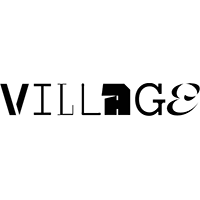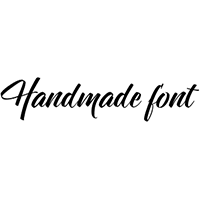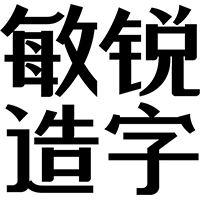My Type Of Music: Christina Aguilera, Hot Hot Heat, Eminem, Kele, The Chemical Brothers

I know it's been a while, but the album cover reviews in My Type of Music are back. The main problem with these overviews is that they tend to be very extensive. Compared to my ScreenFonts series of movie poster critiques there's so many more album releases each month; in fact too many for me to check the band, music style, and album for appropriateness and consistency in cover design and typography. So am trying to change the rules a little. Instead of doing full-fledged examinations of the album covers, I will simply give an overview of the typefaces used, and only comment on selected covers if I know more about the band or album. I said I'll try – I know I easily get carried away when writing. If it works this should enable me to bring back this popular series without saturating my workload.
As usual, all the album covers were gathered from Metacritic Music, so clicking the album name will get you to reviews of the albums in case you are interested. Clicking the artist or band names leads to the official artist's sites. I'd also like to apologise for the album covers off Amazon that are looking slightly blurry. I don't know why their quality is inferior.

We start off with a very strong album cover. After Train of Thought, Revolutions Per Minute is Talib Kweli and Hi-Tek's second album-length collaboration in ten years under the monicker Reflection Eternal. Although the militant graphics on the cover have a stencil graffiti quality usually associated with quick'n'dirty work, the layering and composition are quite sophisticated. The red hues give the sleeve a smouldering appearance. The defiance in the artists' posture is accentuated by the military-style typography – Alternate Gothic No. 3 with a split drop shade (thank you John Downer), Engravers Gothic, and Engravers Roman, punctuated with some wood type ornaments.

Some more wood type on the cover of Bride Screamed Murder, the umpteenth album by post-punk rockers Melvins. The weathered slab serif of the band name is very close to Rian Hughes' Hawksmoor, and the album title is set in some kind of misprinted gothic. For more grungy type see the comprehensive Distressed genre-FontList

The narrow architectural shapes of Alternate Gothic No.2 beautifully harmonise with the wave-like wooden skeleton being built on the cover for To The Sea, the collection of breezily spun folk songs by Hawaiian native and unofficial kingpin of beachside pop rock Jack Johnson. The pared down, poetic design has a very nice painterly blue background behind the silhouette of the man and the structure, and perfectly matches the mellow mood of the album.

An equally poetic line drawing, delicately coloured in with water colours graces the cover for Fever by California rock band Sleepy Sun. Windsor nicely enhances the seventies atmosphere of the cover illustration. The artwork matches the band's sound – "dynamic 70s stoner pop sensibilities fused with a swirling expanse of fuzzy guitars, a throbbing rhythm section and hypnotic, echo drenched vocals".

The cover for See You On The Moon by the Grammy-nominated Tift Merritt is rather no-nonsense. Centred reversed-out Futura caps dominate a high-contrast portrait of the artist, which appears to be printed on some beautifully aged paper with hand-written fragments.

Now this is a pleasant surprise. Shadows, the eighth album by the Scottish Teenage Fanclub sports a work of art by Glaswegian artist Toby Paterson, from his Ever Growing Never Old cycle on its sleeve. The architectural composition with angular concrete cut-outs looks very much like Bauhaus collage art. This makes the choice of FF Bau all the more fitting. FF Bau is a digitisation of Helvetica's earliest direct ancestor, known simply as Grotesk. The face was first introduced by the Schelter & Giesecke foundry in Leipzig around 1880. The Bauhaus, in nearby Dessau, chose this face as the main workhorse for their printing shop, and used it for the vast majority of their classic experiments in asymmetrical typography. In 1999 Erik Spiekermann asked type designer Christian Schwartz to consider drawing a revival of S&G's Grotesk, updating the family for contemporary typographic needs without rationalising away the spirit and warmth of the original. The Regular, Medium, and Bold are drawn directly from S&G sources, and the Super was added for situations where subtlety would be inappropriate. The family was released in 2002 under the name FF Bau, in homage to the most noted users of the original.

There is something TYPO Berlin 2010 "Passion". Jonathan Barnbrook's Mason Serif conjures up the right Victorian steampunk associations, but the position of the artist name is a little aimless, and don't ask me what those descending vertical lines are supposed to contribute to the design.
Der Mensch als Industriepalast [Man as Industrial Palace] from Henning Lederer on Vimeo.

I included Nada Surf's covers album If I Had A Hi-Fi solely for the silly cover illustration. Yes, indeed, both band name and album title are hidden in the line drawing. Don't complain if you get a splitting headache searching for them.

Talk about involuntary – and undesirable – connotations. The painting on the cover for Pigeons, the second album by Brooklyn-based rock quintet Here We Go Magic instantly reminded me of the melting face scene in Steven Spielberg and George Lucas' Raiders Of The Lost Ark, a sight that haunted me for a while after seeing the movie in the theatre. Hey, I was twelve and very impressionable; give me a break. The pink Helvetica Black weirdly fits the image.

A lovely china ink drawing with dashes of white and blood red by Conor J. O'Brien himself adorns the cover for Becoming A Jackal by Villagers, alias for O'Brien, a member of the now defunct avant-garde rock band The Immediate. Band name and album title are set in Baskerville, just don't ask me which version.

To avoid having to incorporate the type in the cover image, one may also go about incorporating the image in the type. Clevah. The shapes of Futura Oblique on the cover for Eyes & Nines by hard rock band Trash Talk reveal just enough to make out the photograph hidden in the album title. I actually quite like this understated approach with its interesting colour palette and subtle depth. And the stencil customisation of the ampersand is very well done.

Errr … I'd better not say anything I guess. MOR country artist Jewel has Poster Bodoni, one of the extra bold high-contrast serif faces, on the cover for Sweet And Wild.

The cover for Future Breeds, the latest album for Canada's Hot Hot Heat, features a colourful and fun illustration by Keith Jones, a prolific Canadian comic artist known for his insanely detailed cityscape drawings. The hand drawn lettering is captured in a blivet-type impossible object

How adorably cute. See how ex-teeny stars Hanson are still vying for credibility on the cover for Shout It Out. The awkward combination of the deliberately lo-fi picture, the child-like hand-written band name, and red Helvetica look a bit desperate though.

I can't shake the feeling the ghost of Reid Miles haunts the sleeve of Mojo, the first studio album in nearly a decade by veteran rock-and-rollers Tom Petty & The Heartbreakers. At first sight the downplayed photograph of the band in combination with the compact sans House Gothic 23 don't really look inspired by any classic Blue Note Records cover, yet it seems as if some divine intervention gently nudged the design in that direction.

The collage of two-tone images on the album cover for American Slang by Jersey punks The Gaslight Anthem is adorned with what I think must be all caps Stymie Black … except the spur on the "G" threw me off a bit. FontFeed reader and Typophile buddy Florian Hardwig pointed out it is the Bitstream version called Stymie Extra Bold, which for some reason doesn't show up in the Search results. I wasn't able to identify the beautiful script used for the album title, which is reminiscent of logos on guitar straps and amplifiers. Although I didn't really expect to find it amongst the Bluemlein Collection, I still think it would fit perfectly in this volume of terrific scripts. It's quite funny that in this day and age, just like Hanson, The Gaslight Anthem take pride in mentioning on the sleeve that their album was "recorded in full frequency stereo sound". Retro chic or irony?

Total Life Forever, the follow-up to British rock band Foals' 2008 debut Antidotes plays it safe with the classic grotesque Standard/Basic Commercial/Gothic 725. In an effort to have all the type fit on the same width the lower horizontal stroke on the "L" was shortened, and the spacing in the middle line adapted. I don't think I quite like the results.

I dislike Futura Condensed almost as much as squooshed type, so you can imagine I don't really care for the album cover for Thank Me Later by rapper, singer, and songwriter Drake. The faux-stencil image is striking though.

On the cover for Body Talk Pt 1 – the first album in a trilogy to be released over the period of a year – Swedish pop artist Robyn reinterprets her Art Deco logo with a bizarre assortment that seems to refer to Japan. (How else do you explain the combination of mechanics/tech and colourful foodstuff including a squid arm?) The logo collage was created by Ellinor Eklund and Bodil Gustafsson Fürst, with art direction by Mary Fagot. The album title was hand-crafted to look like an extra bold 70s geometric display face.
Body Talk Pt.1 is coming! from Robyn on Vimeo.

I can't help myself, but some typographic solutions evoke specific connotations with me. At first glance the worn display face and the grunged up Compacta – identified by FontFeed reader Rainer as the freefont Ambulance Shotgun by Last Soundtrack – on the cover for El Che, the second album for Chicago rapper Rhymefest had me fooled into thinking it was a reggae album. Which it clearly isn't.

The painting on the cover of Goodbye Killer by the Pernice Brothers has Adobe Caslon on it.

A fascinating Victorian atmosphere seeps from the sepia photograph on the cover of Lustre by British singer-songwriter Ed Harcourt. The distressed ornamental type used for the album title is unknown to me; it could be custom designed. However the artist's name is set in a classic copperplate script – Embassy.

The airbrush-style photo illustration on the cover for Lazarus portrays Travie McCoy, the singer of the hipster hip-hop band Gym Class Heroes, flying high in the air with a set of recording tools tied on his back. The conceptual artwork looks very seventies, so it should come as no surprise that the peculiar display alphabet with small circular counters reminded me of Stanley Kubrick's Clockwork Orange logo. French type designer Albert Boton's FF Bastille set includes a very similar face called FF Zan.



Classy – the album sleeve for History From Below, the second full-length by California Americana band Delta Spirit looks like the cover for a luxurious photographer's monograph. The colours and texture of the image of people swimming in the rain is very interesting, and the addition of the black area with white Linotype Didot lends it a "high art" appearance.

The type used on the cover for Up On The Ridge, the all-acoustic bluegrass country album by Grammy-nominated Dierks Bentley is eaten away to the point of breaking up into separate parts, similar to Bodebeck or Avia for example.

The Boxer, the solo debut from Bloc Party singer/guitarist Kele sports a beautiful, moody black and white cover photograph with minimalistic yet nicely integrated typography. The rounded sans caps somewhat look like a technical variant of Estilo.

As if she wants to bring the message home, Macy Gray goes all glam on the album cover for The Sellout, an album of soulful vocals, storytelling lyrics, and sparkling melodies. The type is a grid-based digital display face reminiscent of ARS Trio.

Recovery, Eminem's latest album of confrontational, angst-ridden rap, has a neat logo-like album title set in Standard/Basic Commercial/Gothic 725. By turning the "O" into a graphic device – a red circle with a white plus sign – the word is split in two, forming the entities "Rec" for "record(ing)" and "Very" with an inverted "E".

The underwater photograph of the woman diving on the cover for Further by British dance duo The Chemical Brothers is simply gorgeous; the scintillating bubbles and luminescent blonde hair, body, and robe contrasting beautifully against the black background. The swirling lines and romantic/poetic subject matter give the image an updated Art Nouveau or surrealist appearance. While the slab serif used for the album title is too small for me to accurately identify, FontFeed reader Steve believes it is H&FJ Vitesse. I know from past reference the band logo is based on the unusual display face Sho.

The pencilled rendition of electro-rapper Uffie's name on the cover for her debut album Sex Dreams And Denim Jeans looks a bit like Lazybones, a design which for obvious reasons is included in the Psychedelia FontList. The scratched album title is hand lettered as well.

Double exposing the turn-of-the century photograph created a ghost image of two women and two girls superimposed on the portrait of a sad-looking girl. I suppose she is meant to be the fifth of The Five Ghosts in the title of the album by Canadian indie rock band Stars. The album title – set in Futura caps just like the band name in red – is given a similar ethereal treatment. A moody and appropriate design.

The scratchy hand-crafted lettering on the cover for We Are Born by Sia is a fitting solution for the outrageous colourful picture of the songstress.

"But wait", I hear you say, "there is no type on the cover for Boys Outside, the first solo album by Beta Band vocalist Steve Mason under his own name!" "Why", I reply, "you are very well informed to know all these minutiae." The other version of the sleeve features Big Caslon, and Adobe Caslon used on the website hints that the designer knows a thing or two about optical sizes.

Once in a while Blue Note Records does an attempt at recreating the magic of the Reid Miles album covers, but never truly succeeds. The abstract pattern of big black dots on white on the album cover for Ten by jazz pianist Jason Moran is a step in the right direction, but the vertical DIN 1451 Engschrift – see Albert-Jan Pool's brilliant contemporary digitisation FF DIN Condensed for a full complement of weights and italics – in the black bar look a bit aimless. By the way, our patience is finally rewarded, as FontFont has just released FF DIN Round, the ultimate rounded DIN. I am currently helping translate the PDFs with the history and background information, and I can assure you – forget all those other contenders to the throne.

What an odd and fascinating cover. Homeland, the first album of new material in nearly a decade by Laurie Anderson pictures the performance artist as a silent movie actor. The gradually disappearing serif caps at the top are Caslon 540 Italic.

I am highly suspicious of artists who – just like five-year olds – pay too much attention to their bellybutton. Can't Be Tamed, with Rian Hughes' popular grunge sans Roadkill starring on its cover, seems like a misguided attempt by Miley Cyrus at breaking free from her role as Hannah Montana on Disney and being taken seriously. Can't be tamed? Who're you trying to fool, girl? If you can stomach profanity and intense swearing check the choice words comedy legend Bill Hicks had to say about her dad. And Michael Bolton. Now this rightfully claims the denomination "can't be tamed." Not this cynical plastic crap.

EXPO 86 by indie-rock quartet Wolf Parade uses Neutraface No. 2 on its cover. Check the Futura Alternatives and Inline FontLists for more options.

The-Dream, the artist's name for Terius Nash, is ideally suited for ITC Avant Garde Gothic's alternates and ligatures. Both the "TH" ligature and right-leaning "AM" provide the finishing touch and automatically turn the name into a distinctive word logo. It is given a painterly quality on the cover for Love King, the final instalment of the artist's love triptych. The album title is set in a natural looking script that would fit perfectly in our Antique Handwriting FontList.

If I had a penchant for lame puns I'd say: "Now that's what I call tight buns, bee-atches." Oops, damn, I just did! Scissor Sisters shows one of the gayest heinies ever on the cover for Night Work – an album inspired from a night at a Berlin club. Not that I am constantly checking male behinds, mind you. This sleeve is so incredibly eighties, with the black and white picture, the band name set in spaced out skyline sans caps – Neville Brody's classic display face Industria I believe – at the bottom ("Bottom", get it? Wink, wink, nudge, nudge), and a quickly scrawled handwritten album title. FontFeed reader John Kramer revealed the image is a photo that Robert Mapplethorpe made of dancer Peter Reed as part of the marketing materials for Reed's New York ballet company, in 1980.

And Acolyte, the debut album by dance rock trio Delphic hailing from Manchester has a "smoking" sleeve. Argh, I did it again!? Oh, whatever … The image of the band members morphing into black smoke looks terrific, and is beautifully complemented by the reversed-out band name in simplified modular geometric characters.

How eighties can you get, again? The cover for Crunk Rock, the solo debut album five years in the making by Lil Jon looks like a sleeve for a very early video game – some sort of high-tech graffiti, with its Futura Condensed extruded caps with cheesy chrome effect, spray can highlights, Japanese characters, and busy background. I guess I am not supposed to, but I actually dig this. A lot. It's well-done, consistent, and so over the top it becomes good again.

The cover artwork for Día de los Muertos quality. I really like the naive style and desaturated colour palette of the painting by Mike Egan, an artist out of Pittsburgh, PA, who deals with life, death and religion as subject matter in his art. Egan claims his inspiration comes from many different sources: the German Expressionists, stained glass windows, Halloween, Southern folk art, funeral homes, horror films, music, lowbrow/outsider art, Religious icons, etc. The hand painted extruded three-dimensional sans caps and the album title in yellow and ochre bars are beautifully integrated in the art.

Former member of The Nuns, Rank and File, and True Believers Alejandro Escovedo has classic digital wood type face Juniper and Trade Gothic Bold on the cover for Street Songs Of Love.

The cover for Streets Of Gold, the third album of house party hits and pulsating electro-pop by Boulder, Colorado-based duo 3Oh!3 is very clever. The two hands painted in gold act out the band name, with the thumbs and indexes making an "Oh" shape, and three upright fingers on each side. Although in principle I am not a fan of tightly spaced Helvetica caps, in this example the type is very well set, and visually it works. The switch in type weight from band name to album title is a tried and true graphic device, but I don't mind because it fits the whole concept.




































 闽公网安备35010202000240号
闽公网安备35010202000240号